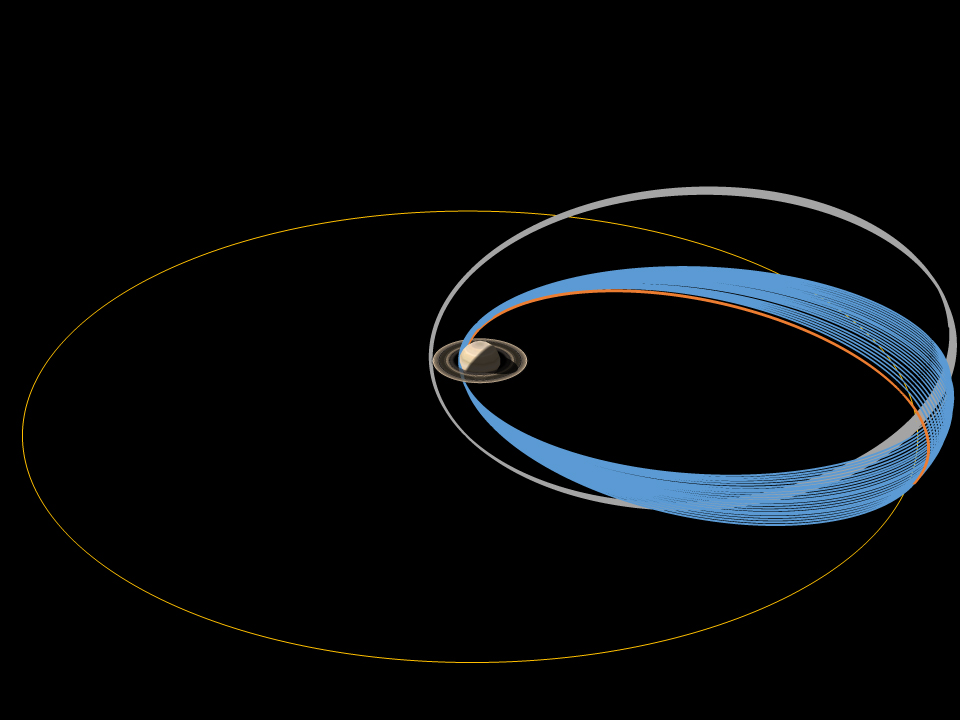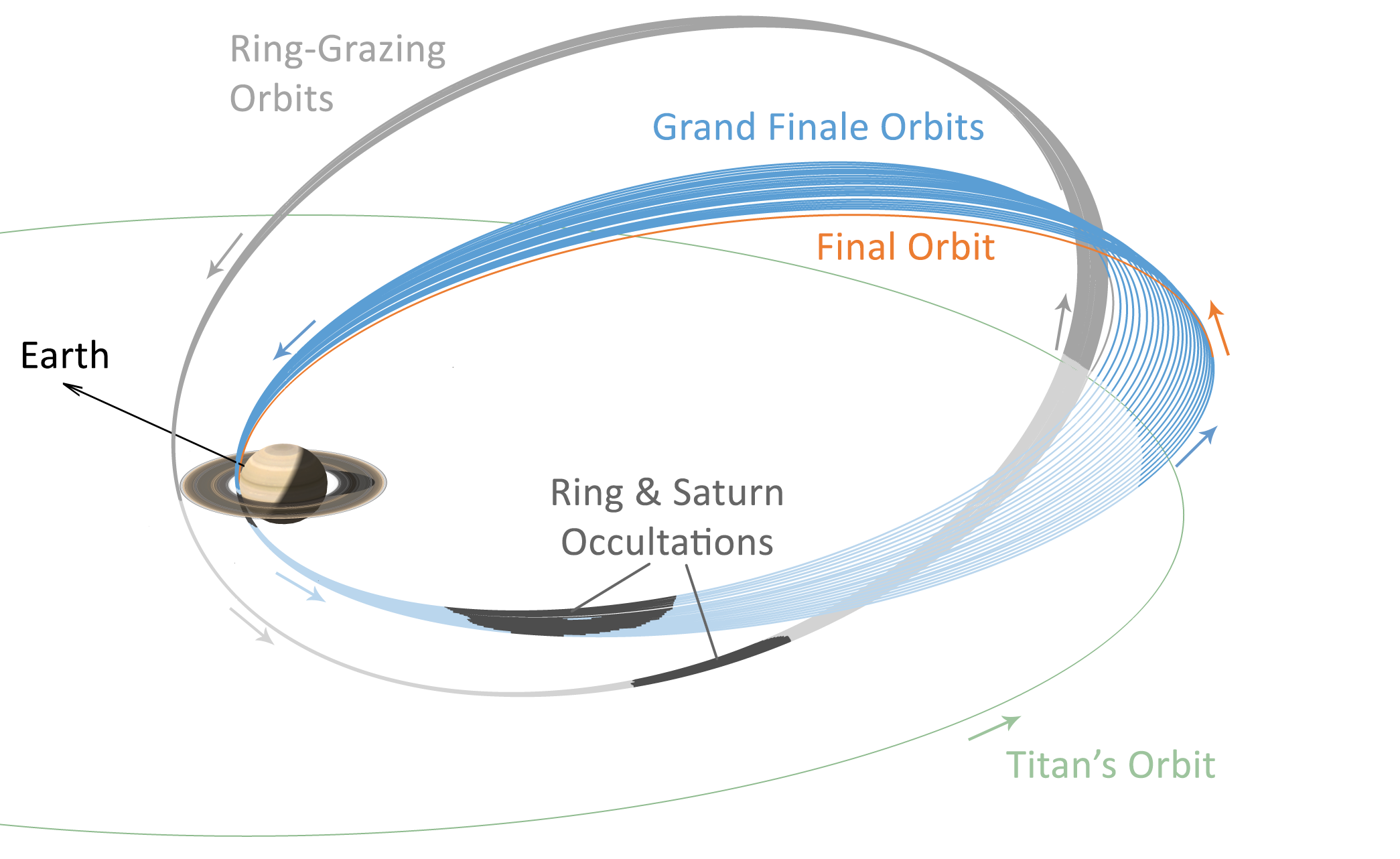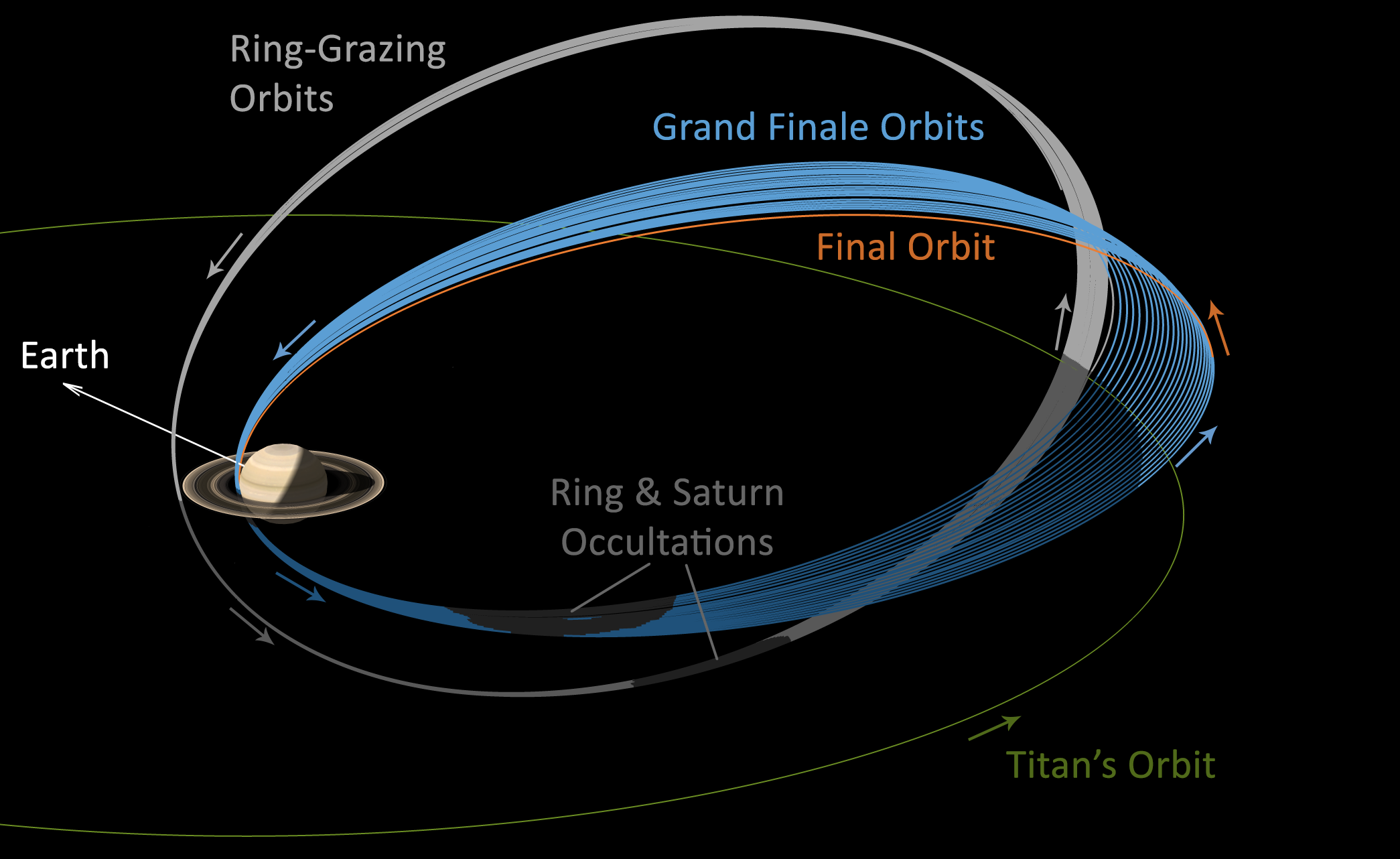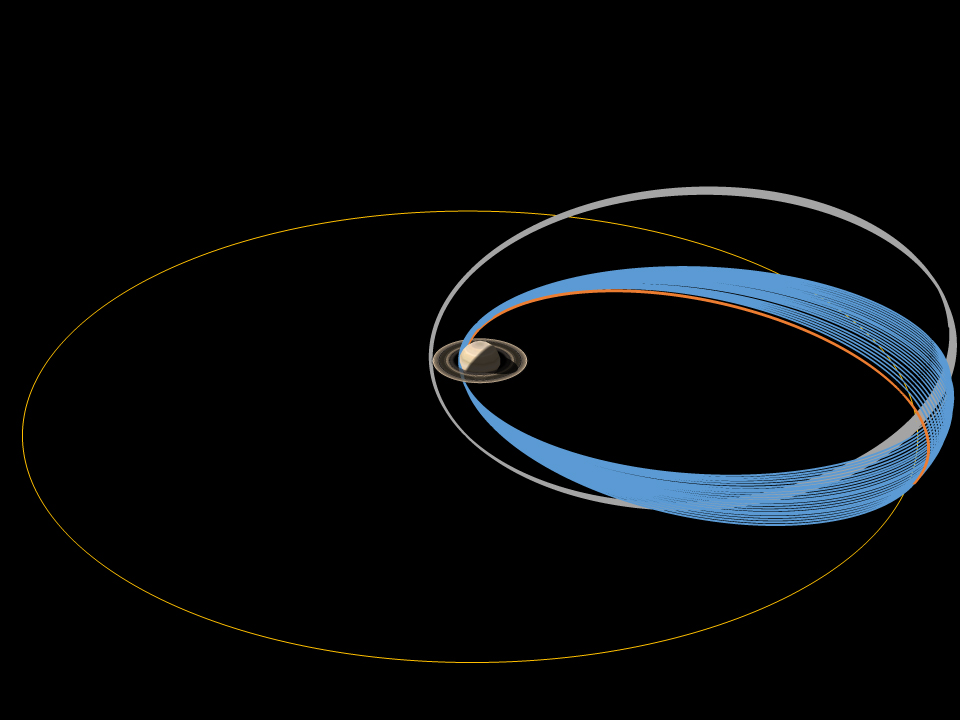Final Orbits and Titan: Cassini Grand Finale (Artist’s Concept)
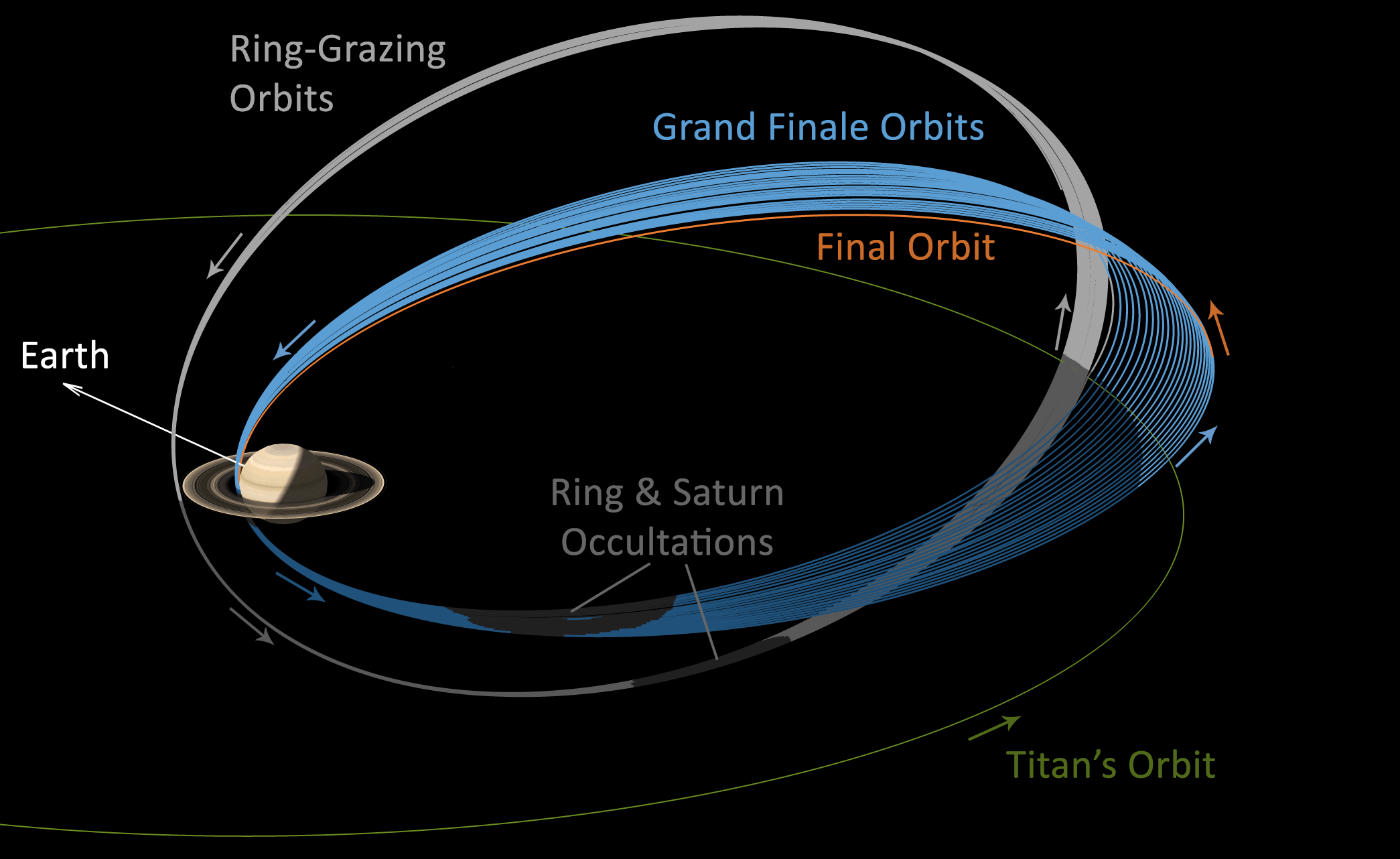
| Credit | NASA/JPL-Caltech |
|---|---|
| Language |
|
This graphic illustrates Cassini's trajectory, or flight path, during the final two phases of its mission. The 20 Ring-Grazing Orbits are shown in gray; the 22 Grand Finale Orbits are shown in blue. The final partial orbit is colored orange.
Short, colored arrows indicate the spacecraft's direction of travel. The long arrow at left indicated the direction toward Earth (as well as the sun).
Portions of these orbits pass through areas where the planet's atmosphere or rings occult, or block, the spacecraft's view of Earth. Occultations are useful for Cassini's radio science investigation, which probes signals transmitted between Earth and the spacecraft in order to learn about the properties of the planet and rings.
The orbit of Saturn's moon Titan is also represented here (large, light green path). The Cassini mission uses flybys of Titan to reshape the spacecraft's orbit -- including the flyby in late April 2017 that causes Cassini's path to jump over the rings and pass through the gap just above Saturn.
